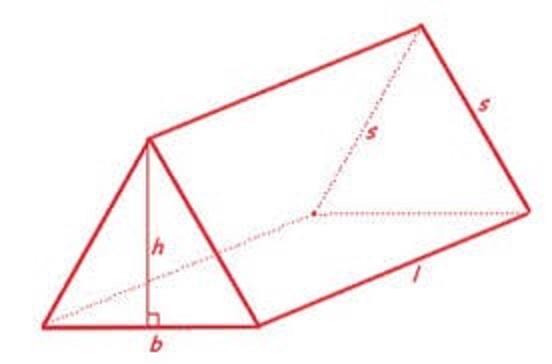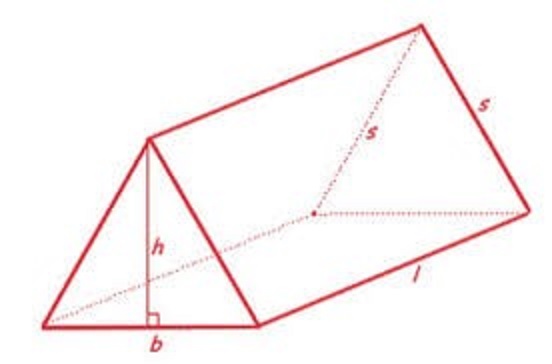What is the surface area of the triangular prism?
2 Answers
Please see below.
Explanation:
.
The triangular prism look like this:

The surface area of this prism consists of:
The bases are triangles. The area of each one is:
The sides are rectangles. The area of a rectangle is:
In the prism,
If the triangular base has unequal sides then you calculate the perimeter
If the base is an equilateral triangle then all three sides have equal areas and the lateral surface area becomes
Explanation:

I'm only answering because the other, featured answer is incomplete.
The figure fails to recognize
The area of the each rectangular face is
The area of each triangular end is
So three rectangles and two triangles gives a total surface area


